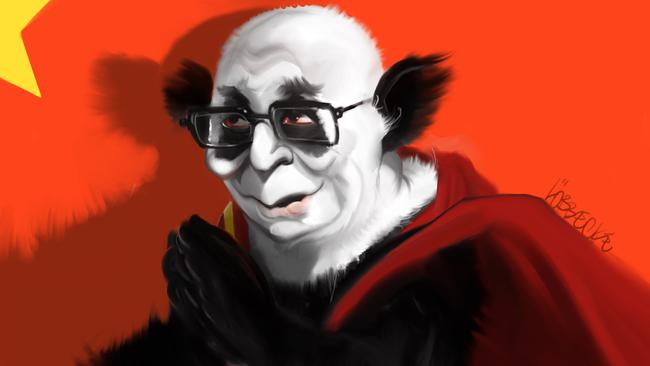Claws retracted, Dalai Lama still scratches China

Jet-lagged and under the weather, I hoped my trip from the airport to see the Dalai Lama would be a short one.
I was disappointed. The journey would take more than 10 hours along a narrow mountain road, often only one lane, half washed out by monsoon rains, sometimes covered in mudslides, and occasionally requiring us to ford streams where bridges had washed out. As is the case all over India, cows had the right of way and knew it, ambling placidly along the centre of the narrow roadway while cars and trucks piled up in both directions.
This high in the mountains, goats, sheep, feral dogs, small children and even the occasional yak all kept our driver alert. This was not the worst traffic I had seen in India. I remember the bottleneck caused by an elephant going the wrong way on the main road during rush hour in the Sikh holy city of Amritsar. Nevertheless, I was struck by the good-natured patience of Indians coping with such extraordinary disorderliness on a major national road.
You might think a journey into a remote mountain valley so close to the residence of the Dalai Lama, whom many Tibetans believe to be an emanation of the bodhisattva of compassion, would be a journey away from the geopolitical complexities of our time. Alas, geopolitics are as relevant for Tibetans as any other people in Asia.
A small nation of about six million people in a territory constituting about a quarter of the landmass of modern China, Tibetans have been thoroughly crushed.
Much of their traditional territory is now incorporated into the Chinese provinces of Sichuan and Qinghai, and Chinese immigrants now outnumber Tibetans even in historic Tibet. On its face, the Tibetan national cause appears increasingly forlorn.
Yet the 84-year-old Dalai Lama — who saw his country occupied by communist China in 1950 and who has lived in exile in India since escaping in 1959 over mountain passes more arduous than anything I managed by car — has grown more serene and confident in the future of Tibet as the years have passed.
China’s power in Tibet has grown, and the region has become a testing ground for the panoply of surveillance and repression measures that Chinese authorities have since rolled out in Xinjiang and elsewhere, but the small nation remains.
Efforts by Chinese officials to corrupt or confuse the religious hierarchy in Tibet have largely failed. Globally, the Dalai Lama has become the most famous Buddhist in 2500 years.
Worse, from Beijing’s point of view, Tibetan Buddhist ideas are growing in popularity among the estimated 250 million Han Chinese Buddhists in China.
None of this translates into a clear path forward for Tibet. Although the Dalai Lama reassured me that he intends to live well past 100, speculation about succession is already rife.
In what may be the world’s only example of an atheist state extending its jurisdiction into the spirit world, Beijing has declared that any attempted reincarnation must “comply with Chinese laws”.
For his part, the Dalai Lama intends to be reincarnated, if at all, outside Chinese rule. He believes that in the long run his program of Tibetan autonomy under Chinese domination can work, in part because sympathetic Han Chinese Buddhists will prod future, presumably more democratic Chinese governments to treat Tibet with greater sensitivity.
In the meantime, the Tibetan national movement’s goal of autonomy and its adherence to nonviolence despite Chinese provocation enables the Tibetan government-in-exile to function around the world and — where Chinese pressure is not too severe — to enjoy quasi-diplomatic standing.
Meanwhile, Tibet highlights another problem that keeps Beijing officials awake at night. The technology of surveillance, including biometrics, has given Chinese authorities unprecedented hard power in places ranging from Tibet and Xinjiang to the Han Chinese heartland. China’s rulers are in a position to know more about what their subjects do, where they go, and what they think than any rulers in the history of the world. But that power does not seem to bring legitimacy, and the exercise of that power does not make China more admired or trusted abroad.
On the road back from the meeting with His Holiness, our caravan was frequently halted by road crews. With the rains temporarily ended, the highway workers came out as well, not only to repair the earlier damage from the monsoon, but to turn the narrow mountain roadway into a four-lane highway that will change the military equation on India’s frontier. The Dalai Lama may be looking to soft power to keep the Tibetan cause alive, but New Delhi wants its defences against China to be more substantial.
The Wall Street Journal


